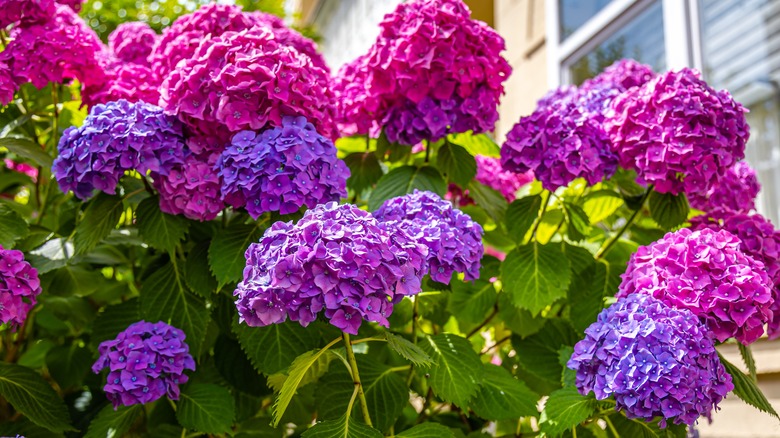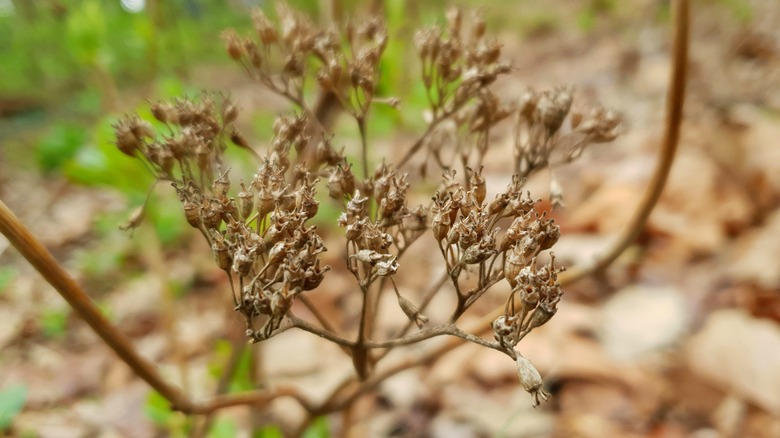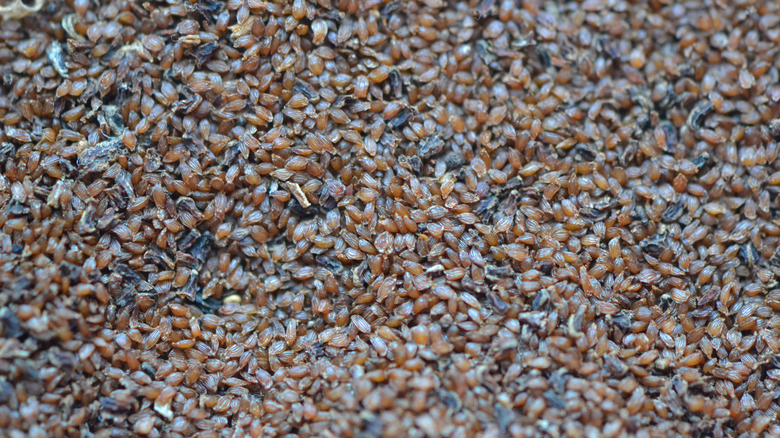Avoid This Common Mistake When Growing Hydrangeas From Seed
You may have seen these massive, showy, white, pink, blue, and purple blossoms during the summer. Famous for being a Cape Cod classic flower, this cottage-core plant is known as the hydrangea. While hydrangeas are not inherently hard to grow, they are typically harder to grow from seed. One of the most common mistakes you can unknowingly make is not taking care to properly store and plant the flowers' very small seeds. While these giant flowers may appear to be one large single-flowering bloom, they're actually made up of a bunch of small individual flowers with incredibly tiny seeds that can easily be overlooked as dirt or debris.
You can grow hydrangeas from cuttings, which are exact clones of the parent plant, and seeds, which are not. Growing from seed takes a few extra steps if you're planning to harvest them from an already established plant. Alternatively, you can buy hydrangea seeds online, but many have mixed reviews. So, it may be best to source them from a mature hydrangea plant in your yard or a friend who is willing to share. If you decide to harvest hydrangea seeds, follow these steps to avoid this common mistake.
How to harvest hydrangea seeds
When harvesting hydrangea seeds, you'll need to wait until the flower turns brown — usually in the fall. Once the flower turns brown, cut the stem of the flower heads and put them in a paper bag to dry out. After about a week, when the flower is completely dried, hold the bag closed and shake it to release the seeds. Pour out the contents of the bag onto a surface with good lighting so you can sort through everything — a white paper towel, a large piece of paper, or a white sheet can help with this. You can also use a plastic container or a box so the contents and seeds stay contained in one area.
You may overlook the seeds at first. They look similar to little specks of black pepper, and they'll all look pretty uniform, which is how you can tell them apart from garden soil and debris. Once you've harvested your seeds, you can plant them or store them until spring. If you store the seeds until spring, make sure to keep them cool and dry. Store them in a plastic bag, an envelope, or even in an airtight container in the fridge.
How to grow hydrangea seeds
Growing hydrangeas from seed just requires a little extra care, attention, and water. Hydrangeas grow in USDA Zones 3 to 9. Some types of hydrangeas are hardier in cold weather, and others thrive in warmer weather. So make sure to choose one that does well in your zone. If you choose to plant your hydrangea seeds right after you collect them, you'll need a seed starting tray ($3 at Walmart) and a well-draining soil mixture.
Fill your seed starting tray with soil and moisten it with water. Sow about three seeds in each spot where you want a plant to grow, directly on top of the soil. Don't push them in or bury them. Doing so can prevent them from growing — a common mistake when growing hydrangeas from seed. You'll want to keep the soil moist and well-drained for the next few weeks. You don't want it to be too soggy or too wet. Keep it in a sunny spot near a south-facing window or under grow lights to get the most light. Make sure to keep your seeds out of the cold.
In about 14 days, you should start seeing sprouts. Thin the sprouts — so they aren't crowded. This eliminates competition for resources like sunlight, nutrients, and water, allowing the strongest seedlings to grow. After your seedlings have two or three true leaves, you can transplant them into a pot and eventually transfer them to a sunny location in your garden after the last frost in spring.


